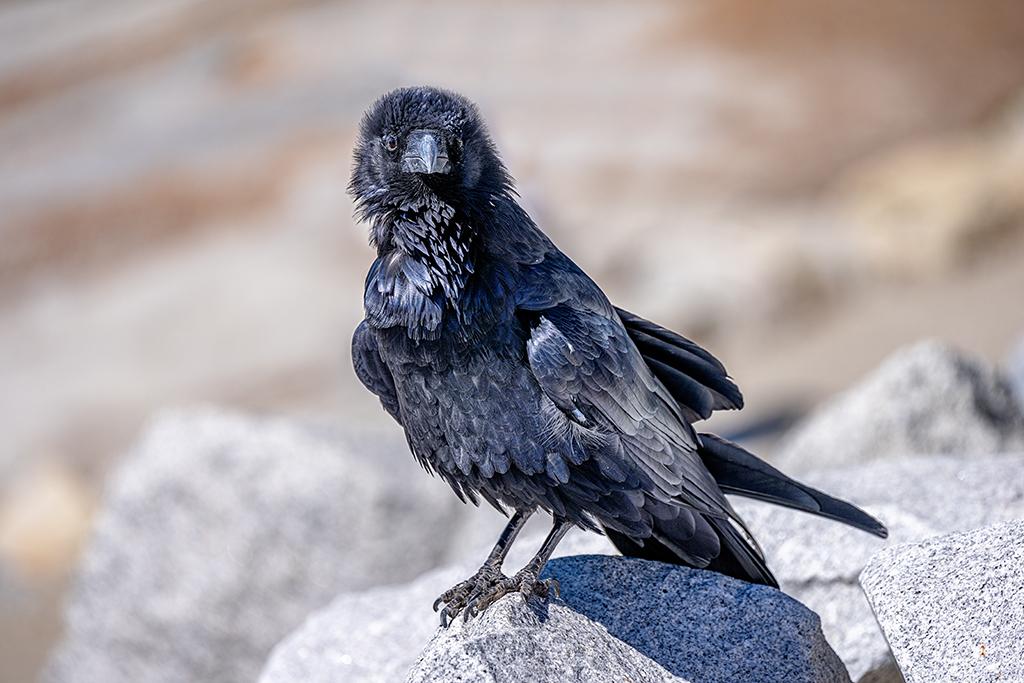From birds to bears, snakes to spiders, Yosemite National Park is home to a wide variety of wildlife species – 400 species of vertebrates, in fact. It helps that Yosemite harbors so many diverse habitats (meadow, mountain, forest, riparian) within its boundaries.

Deer in a meadow at Yosemite Valley, Yosemite National Park / Rebecca Latson
Visit Yosemite Valley’s meadows or Tuolumne Meadows early in the morning for a chance to spot a mule deer or two. Squirrels are ubiquitous and you may see one or more of the 4 common squirrels found within the park: golden-mantled ground squirrel, Western gray squirrel, Douglas squirrel, and the California ground squirrel.

Looking for some attention (or a handout) at Glacier Point, Yosemite National Park / Rebecca Latson
Black bears, mountain lions, Sierra Nevada red fox and bighorn sheep, and fishers also call the park home, as do 17 species of bats, at least 6 species of which live in Yosemite’s hollowed-out sequoia trees.
There are 6 species of native fish and 9 species of non-native fish (mainly trout) that were introduced as far back as 1877 into the many lakes of this glacially-carved landscape. If you feel like dropping a line in these waterbodies, you should read about fishing in the park before doing so to familiarize yourself with what is and is not permitted at Yosemite.
Of the 13 species of snakes found at Yosemite, only one, the Northern Pacific rattlesnake, is venomous. Most snakes are shy and would rather just be left alone and avoid human-to-snake contact, so the chance of seeing any snake, much less being bitten by a rattlesnake, is low. Watch where you place your feet and hands when stepping over logs and scrambling along rocks and ledges to avoid surprising a rattler.
If you visit Yosemite in the fall, you might actually see a tarantula crossing road (don’t ask it why). Don’t get too close to one of these guys because of their urticating (stinging) hairs on their abdomens that they can throw off toward an attacker. Best to capture a tarantula with a telephoto lens.

Quote the raven spotted at Olmsted Point "Nevermore," Yosemite National Park / Rebecca Latson
If you are a birder or bird photographer or just like looking at birds in general, Yosemite is a great place to do that, with 262 documented species of our feathered friends either living in or passing through the park, including ravens, mergansers, sooty grouse, Northern pygmy-owls, Anna’s hummingbirds, and the American dipper, which uses its wings to walk underwater. To help you keep track of the birds you spot, here’s a Yosemite Bird Checklist PDF.
It goes without saying, of course, that you should never feed the wildlife, no matter how cute it may look and act. Human food isn’t conducive to wildlife digestive systems since it’s not found naturally within Yosemite environments. Feeding wildlife also habituates them to human handouts and will make them aggressive toward that end, which doesn’t work out well for either human or wildlife.
Keep a safe distance from the wildlife – at least 100 yards (300 feet) from the larger species. Use your telephoto lens or smartphone setting for that portrait close-up. Hey, if your telephoto lens or setting can't get you that portrait shot, then include the wildlife in your landscape photos to give your viewer an idea of the environment within which that particular animal roams and feeds.





